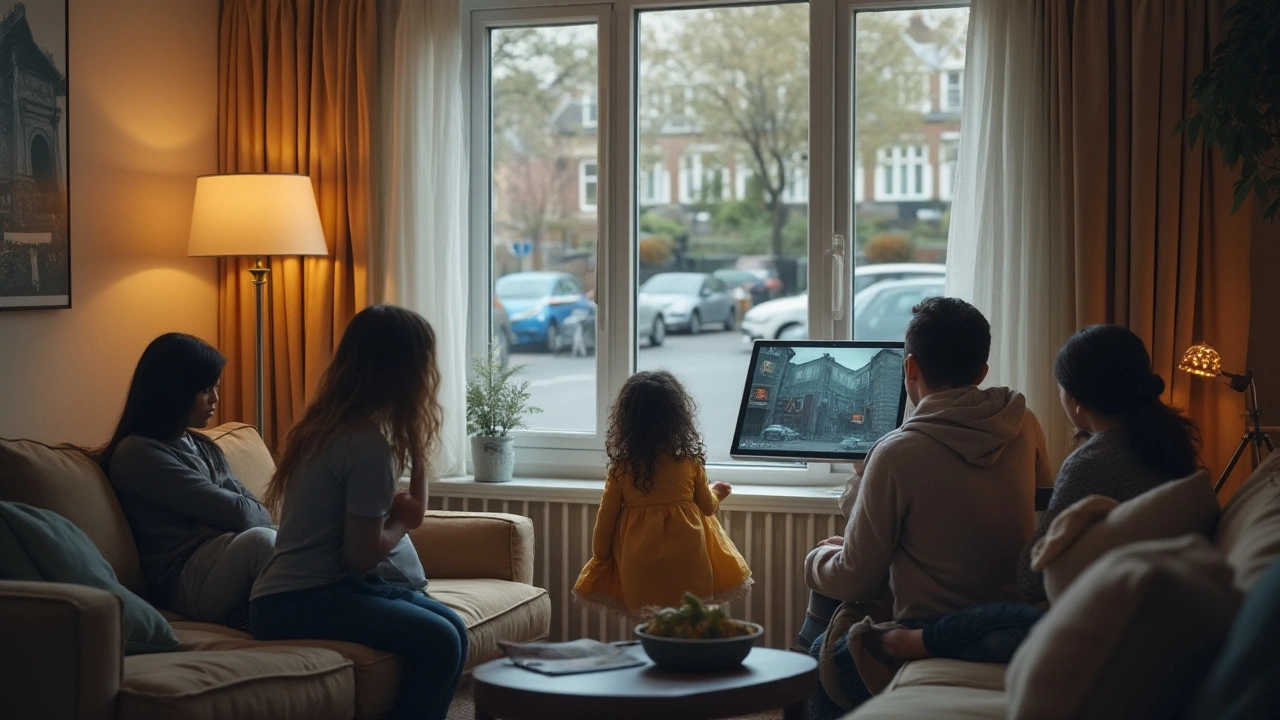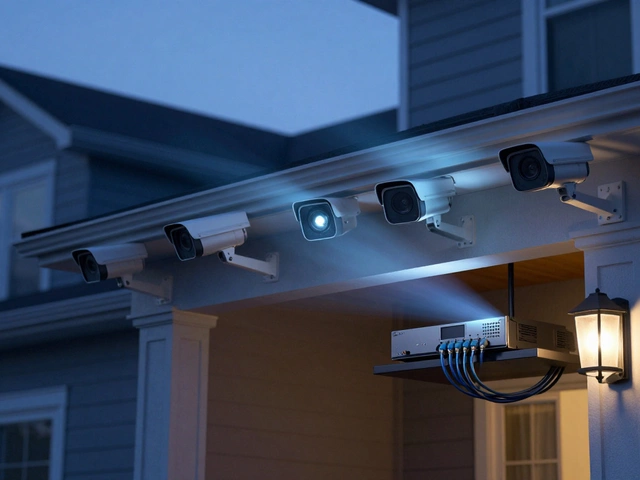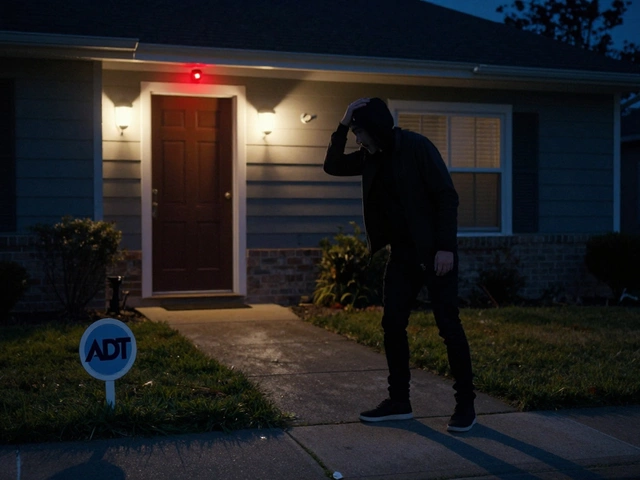The ADT class action lawsuit has caught the attention of home security enthusiasts and skeptics alike. It's a case that delves deep into the heart of privacy concerns in the digital age. Amidst growing reliance on smart home devices, many homeowners have placed their trust in tech giants to safeguard their personal spaces. But what happens when that trust is broken?
The lawsuit alleges serious breaches of privacy, thrusting both ADT and the broader smart home security industry into the spotlight. Understanding the background, allegations, and potential outcomes of this case is vital—not just for current and future users, but for anyone interested in the ethical dynamics of technology today.
- Background of the ADT Lawsuit
- Key Allegations and Legal Issues
- Implications for Smart Home Security
- What Consumers Can Do to Protect Themselves
Background of the ADT Lawsuit
The ADT lawsuit came under the spotlight when serious allegations were made regarding privacy intrusions. It all began when a longstanding employee of ADT, the security giant, was accused of secretly accessing the video feeds from home security cameras installed in customer homes. This wasn't an isolated incident but occurred over a period of several years, affecting hundreds of customers. The breach primarily took place in the Dallas, Texas area, creating a ripple of mistrust and anger among ADT's customer base. The discovery of this unauthorized access followed a complaint by one astute customer, leading to an investigation that revealed the shocking extent of the privacy violations.
The individual responsible, named Telesforo Aviles, abused his position to clandestinely add his email address to the customers' accounts, allowing him continuous unauthorized access. This allowed him to watch hundreds of customers without their consent or knowledge. Such unauthorized entry exposed the vulnerabilities not only in ADT’s systems but also highlighted potential shortcomings in the fast-evolving landscape of smart home security solutions. The lawsuit highlighted the urgent need for robust safeguarding measures to prevent such breaches from occurring again. To many, this felt like a tremendous betrayal since the company was supposed to be a protector, not an invader, of personal spaces.
According to a statement from ADT, "We are deeply sorry for what happened to the customers affected by the unauthorized access." The company emphasized their commitment to tightening security policies to ensure such breaches are avoided in the future.
The revelation of the security breach led to significant fallout—both legal and reputational. Customers affected by this breach didn't just suffer invasions of privacy, but also experienced a massive erosion in trust. The ripple effects of this breach went beyond ADT's immediate customer base, causing concerns across the entire smart home security industry. The litigation brought forth serious questions about the adequacy of existing data protection measures and forced companies to re-evaluate their policies to prevent employee exploitation of surveillance technologies. Through legal avenues, customers sought to hold ADT accountable, not just for compensatory damages, but also to push for industry-wide changes that would protect consumer privacy in the digital age.

Key Allegations and Legal Issues
The ADT class action lawsuit revolves around claims of unauthorized access to customers' security camera feeds, shaking the trust that many had placed in their smart home systems. The core allegation is that a former technician, who had worked with the company for several years, abused his position to access video footage from customers' homes over a period of many years. This resulted in thousands of private moments being potentially exposed, which is deeply troubling for affected individuals. Such incidents are not just about breaches of privacy; they go to the heart of what consumers expect when they invest in home security systems—safety and confidentiality.
What's particularly striking in this lawsuit is how it highlights the vulnerabilities in what are marketed as highly secure systems. Many customers were unaware until the breach was disclosed long after the events occurred, suggesting failures in both internal controls and communication standards. These alleged oversights have led to significant legal scrutiny, questioning how a single rogue employee could have such unrestricted access for so long. This brings us to an essential legal issue: what measures should companies like ADT have in place to prevent unauthorized access and protect consumer data?
Another dimension of the lawsuit centers on consumer rights and how they are protected under existing privacy laws. In an era where technology companies aggregate vast amounts of data, this case may set precedents on how they must handle such sensitive information. The lawsuit seeks accountability, demanding stringent controls and safeguards to prevent such breaches in the future. This case isn't just about remedying past wrongs but is pivotal in shaping industry standards for the future.
"Our clients expected a level of privacy and security that was not met," said John W. Barrett, an attorney representing affected clients. "This is a breach of trust on multiple levels."ADT's legal team may argue that they cannot be held responsible for the independent actions of a rogue employee, challenging the extent of their liability. However, the plaintiff's side contends that ADT's internal practices directly contributed to these expansive violations of privacy.
Beyond the courtroom implications, the case has stirred public discourse on digital privacy. It serves as a wake-up call for all of us who utilize smart devices in our homes. It's a reminder to assess how much we automate and digitize our lives and to question the robust security protocols companies claim to have in place. Every connected device is a potential entry point into our lives and, without ironclad security measures, our privacy remains at risk.
The lawsuit has drawn attention far and wide, urging better regulatory frameworks that enforce transparency and security. As the case unfolds, it may influence tighter legislative measures designed to protect consumers against digital intrusions. For tech giants and users, alike, this lawsuit underscores the pressing need for vigilance, innovation, and unwavering adherence to ethical practices in securing our digital domains.

Implications for Smart Home Security
The unfolding events from the ADT class action lawsuit are not just isolated to one company; they serve as a cautionary tale for the entire smart home security landscape. With the increasing popularity of interconnected devices, from video doorbells to intelligent thermostats, the potential vulnerability of these systems becomes a pressing concern. Consumers have increasingly relied on their smart devices for convenience, unaware or dismissive of the digital doors they leave ajar for unauthorized eyes.
The allegations against ADT, which involve unauthorized access to customer video feeds, have spurred a wave of distrust. This revelation could prompt users to rethink the terms of service they agree to with tech providers, urging more transparency and greater accountability. Affected consumers are calling out for better encryption and multi-factor authentication measures to prevent unauthorized access. The security breach highlighted in this lawsuit illustrates the precarious balance between convenience and privacy. Reports indicate that many users were under the impression that their surveillance feeds were locked down securely, only to find out they were susceptible to exploitation.
The case has also encouraged regulatory bodies to consider imposing stricter guidelines for security systems providers. Legislative changes could aim to enforce robust security measures and set benchmarks that companies must follow to protect consumer data. Devices would be subject to regular security audits and vulnerability assessments to ensure they meet the necessary standards. In the words of cybersecurity expert Jane Doe,
"Trust in these systems can only be rebuilt through transparency and a steadfast commitment to improving privacy protection measures."This notion has resonated across the digital landscape, echoing the need for deeper scrutiny into the software ecosystems that drive these devices.
For companies dealing in smart home solutions, the lawsuit serves as a wake-up call. There’s an urgent need to innovate continuously, not just in features but in security as well. Many are now investing in AI and machine learning to predict and counteract potential threats before they penetrate systems. Implementing end-to-end encryption and real-time threat monitoring are becoming standard practices among industry leaders who have grasped the gravity of the situation. However, with new protection techniques come new threats, requiring perpetual vigilance.
Finally, from a consumer standpoint, the lawsuit could bring about a more discerning approach to choosing smart home products. Armed with better knowledge, users might start prioritizing security features over aesthetics or novelty. They might also become more proactive in safeguarding their systems—changing passwords regularly, conducting personal security audits, and keeping software updates current. This shift in consumer behavior could, in turn, forge a more robust market where competition drives meaningful improvements in security features, reinforcing the very barriers that protect consumer data against breaches.

What Consumers Can Do to Protect Themselves
While technology has woven itself intricately into our lives, offering convenience at the click of a button, it has also opened doors to potential vulnerabilities. In light of the ADT lawsuit, homeowners are thinking twice about their smart home security measures. The first line of defense is awareness - knowing what risks are out there and how they can be mitigated is crucial for every consumer. One cannot underestimate the importance of securing one's personal space, both digitally and physically, from unauthorized access and breaches, which can lead to significant privacy invasions and data theft.
To begin with, it's vital for consumers to have robust passwords for all their smart devices. A password that combines uppercase, lowercase, numbers, and symbols can significantly reduce the likelihood of unauthorized access. It's recommended to change these passwords regularly, perhaps every few months. Password management tools are also an excellent way to ensure each device has a unique and strong password, which can be complex to remember on your own. In addition to passwords, activating two-factor authentication on all possible devices provides an extra layer of protection, making it harder for intruders to gain control over smart systems.
Besides on-device security measures, consumers should also routinely check and update the firmware of their devices. This is incredibly important since developers often release patches to fix vulnerabilities as they become aware of them. Ignoring software updates can leave your system open to known threats that could have been easily avoided. Setting devices to update automatically can ease this process. However, manual checks ensure that no update, particularly critical security patches, is missed, keeping systems fortified against emerging threats.
Furthermore, having a trusted and secure network setup is crucial. This means encrypting your Wi-Fi connection and limiting access to it. Only the most important devices, and trusted users, should have access to your home network. This can be managed through network settings where you can restrict entry to unknown devices, which adds another barrier for anyone looking to exploit home security systems remotely. Moreover, monitoring the network for any unusual activity can alert you early to possible intrusions, allowing you to take action before any damage is done.
"The key to defending against cyber risks in home security systems isn't just having advanced technology, but also ensuring proper usage and remaining vigilant at all times," cybersecurity expert Amit Yoran once said.
Educating oneself on privacy policies and terms of service that come along with smart devices is another layer of armor in protecting one's home. Often, these documents outline how data is utilized and stored. Understanding what you are agreeing to when using a product can guide you to choose devices that align with your privacy standards. These elements can sometimes be overlooked, but given the current focus on data security due to the lawsuit, it proves necessary to reassess what permissions you allow and which company policies meet your comfort level.
Lastly, considering investing in a cybersecurity service or professional consultation to assess your home systems' vulnerabilities could be a wise decision for those who want a more comprehensive understanding of their current setup and further recommendations. Such experts can provide insights specific to your circumstances and suggest methods and technologies tailored to fortifying your home against potential risks. Putting multiple layers of security in place will often deter even the most persistent threats, making your home a hard target and ensuring peace of mind.






